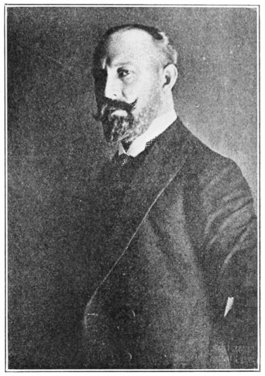attaching any profound meaning to it, namely, that there is nothing new under the sun, and what we call new, in reality, embodies an old and identical idea in a new garb.
 Dr. K. A. Lengner,
Dr. K. A. Lengner,
President of the Exposition.
Connected with the Steinpalast by large halls is the "Hall for Chemical Industry" and scientific instruments. To the right of the large "Festplatz" and between it and the "Grosse Garten" and amidst a long row of fine large linden trees, there runs along an avenue, 40 meters wide, along one of the sides of which foreign nations have erected their pavilions. China has erected a pavilion in the form of a pagoda. Austria has built a large-sized rectangular structure with a massive roof, high walls, large windows and wide imposing entrances. Russia has erected a building after designs made by a Russian architect and resembling in style some of the buildings seen in the Kremelin. Japan, likewise, has contributed a rectangular structure, after a national design, simple but most effective in displaying the exhibits. Switzerland, has put up a building characteristic of the Bervese  Netherlands, Spain, Italy, France, Hungary and Amsterdam all have erected pavilions in style of architecture exhibiting the national characteristics in their design. This "rue des nations" shows off well at night when illuminated. Passing out of the "rue des nations" and around the end of the botanical garden, we come in sight of the several large halls, housing life-saving devices, means for the care of the sick and injured, traffic on land and sea, appliances used in the care of prisoners and the insane, army, navy and colonial hygiene. A sylvan restaurant stands at all hours ready to administer to the physical need of the visitor.
Netherlands, Spain, Italy, France, Hungary and Amsterdam all have erected pavilions in style of architecture exhibiting the national characteristics in their design. This "rue des nations" shows off well at night when illuminated. Passing out of the "rue des nations" and around the end of the botanical garden, we come in sight of the several large halls, housing life-saving devices, means for the care of the sick and injured, traffic on land and sea, appliances used in the care of prisoners and the insane, army, navy and colonial hygiene. A sylvan restaurant stands at all hours ready to administer to the physical need of the visitor.
